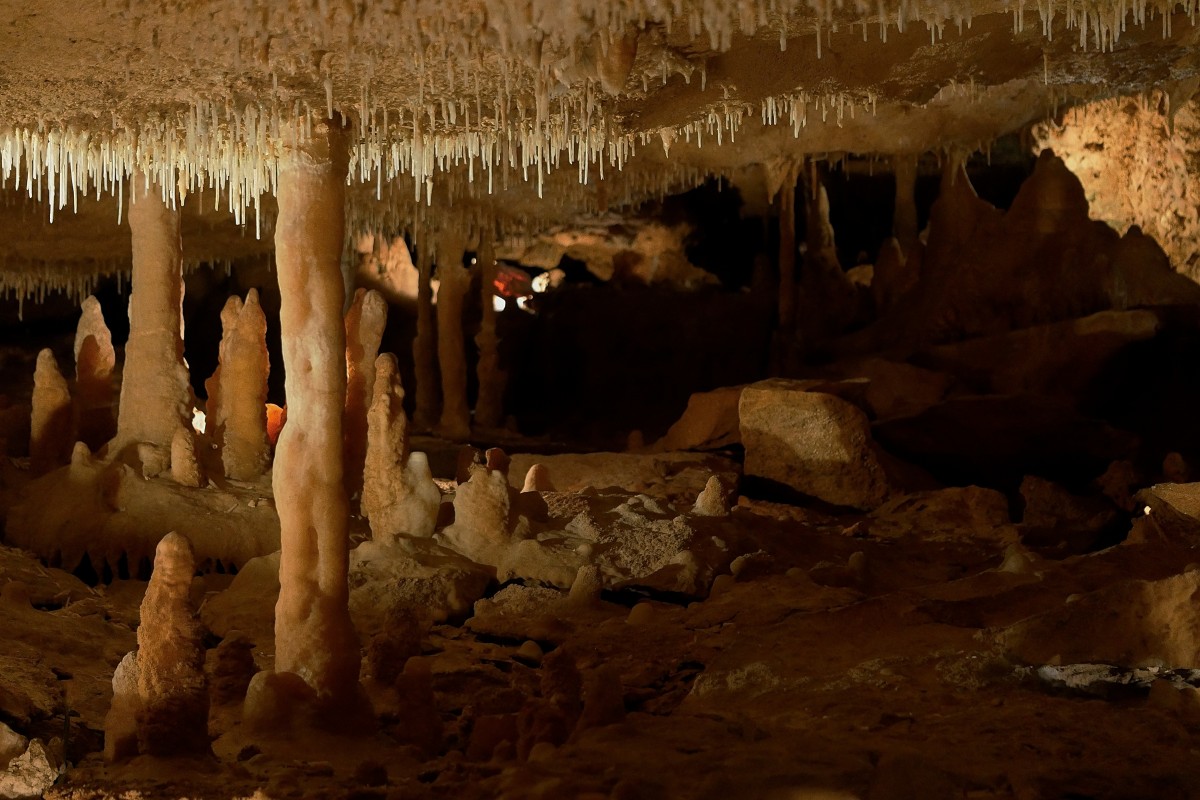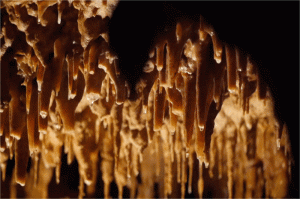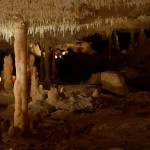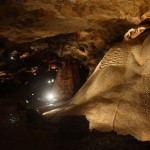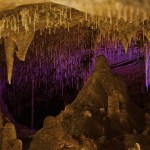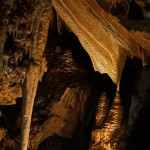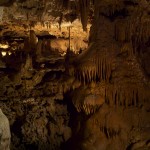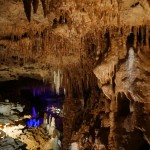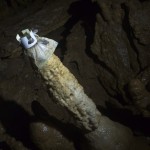It’s hard to tell by just looking at them, but Speleothems are these amazing, continuous records of seasonal change that allow us to peer back into past climates for particular localities over thousands, sometimes tens of thousands, of years. A speleothem is simply a calcite deposit formed from dripping water that is built up in layers over time. This information is literally laying around in vast underground networks across the world, and can often be found branded as local tourist attractions, and curiosities of nature. But these unique and fragile earth libraries are sometimes poorly protected, and often overlooked for the incredible insight that can be gained through careful observation and reporting. Texas is well known for its incredible cave deposits, and InnerSpace caverns is no exception.

The limestone rocks of the Edwards group were originally deposited about 100 million years ago when a warm, shallow sea covered central Texas. Marine life flourished. As the marine organisms died, their calcium carbonate shells and skeletons sank and solidified into layers of limestone. The sea level lowered and the Edwards limestone was buried, and eventually uplifted due to large-scale geologic processes. Major karstification (the stuff our Austin aquifers are made of) began uplifting approximately 25 million years ago (Sharp, 1997). Fractures and faults, such as the Balcones fault, allow rainwater to penetrate into and dissolve the soluble rock layers of the Edwards group (Ferrill et al., 2004). Texas Caves, The Environmental Science Institute
- Videography
You can witness these amazing geologic processes by visiting an environment like InnerSpace Caverns; just keep some perspective in mind on just how long those rocks have been around before you go breaking off souvenirs; actually, speleothems are called precipitates because they are literally created from water droplets precipitating their dissolved calcium. Recent studies conducted by Geologists at the University of Texas at Austin are helping to reveal just how phenomenal the record keeping of speleothems can be. The following study is part of a broader effort to refine climate models that are used to predict how the climate might shift in the future.
More studies for your reading enjoyment:
Feng, W., Hardt, B.F., Banner, J.L., Meyer, K.J., James, E.W., Musgrove, M., Edwards, R.L., Cheng, H., and Min, A., 2014, Changing amounts and sources of moisture in the U.S. southwest since the Last Glacial Maximum in response to global climate change: Earth and Planetary Science Letters, v. 401, p. 47–56, doi: 10.1016/j.epsl.2014.05.046. (Article)
Meyer, K.W., Feng, W., Breecker, D. O, Banner, J. L., Guilfoyle, A., 2014, Interpretation of speleothem calcite d13C values: Evidence from monitoring soil CO2, drip water, and modern speleothem calcite in central Texas. Geochim. Cosmochim. Acta.
Feng, W., Casteel, R.C., Banner, J.L., Heinz Fry, A., 2013, Oxygen isotopes of precipitation, cave drip water and speleothem calcite from a well-ventilated cave in Texas, USA: Assessing a new speleothem temperature proxy.Geochim. Cosmochim. Acta. (Article)
Partin, J., Quinn, T. M., Shen, C-C, Emile-Geay, J., Taylor, F.W., Maupin, C.R., Lin, K., Jackson, C.S., Banner, J.L., Sinclair, D.J., Huh, C.-A., 2013, Multi‐decadal rainfall variability in the South Pacific convergent zone as revealed by stalagmite geochemistry, Geology. (Article)
Maupin, C. R., Partin, J. W., Shen, C.-C., Quinn, T. M., Lin, K., Taylor, F. W., Banner, J. L., Thirumalai, K., and Sinclair, D. J., 2013, Persistent decadal-scale rainfall variability in the tropical South Pacific Convergence Zone through the past six centuries, Climate of the Past Discuss., 9, 5593-5625, doi:10.5194/cpd-9-5593-2013. (Article)

